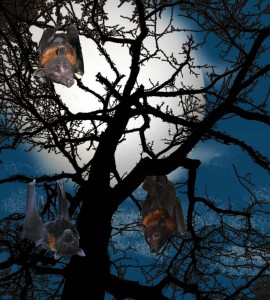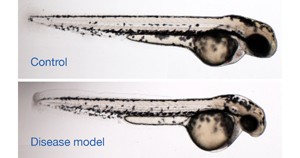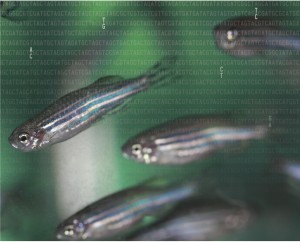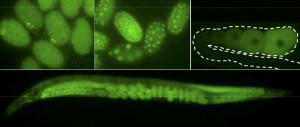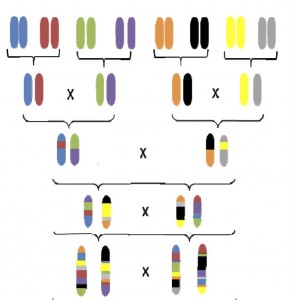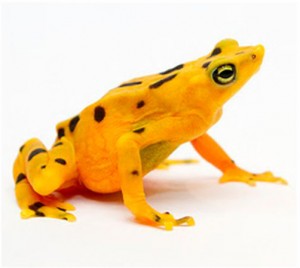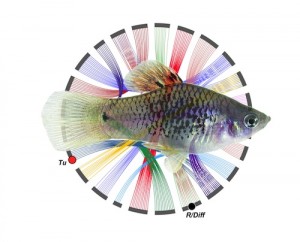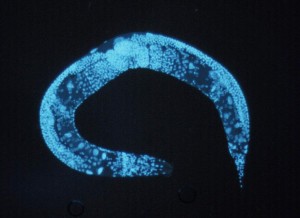Enter your address to receive notifications about new posts to your email.
Articles by Cristy Gelling (96 results)
-
Bat signals: genomic traces of sensory rewiring
How does evolution rewire an animal’s sensory system? In time for both National Bat Week and Halloween, new research in G3 investigates this question by comparing the genomes of bat species that “see” the world in different ways. The black flying fox Pteropus alecto forages for fruit mainly by smell and sight. In contrast, the…
-
GSA Award Essays
Check out the GSA award winners’ essays in this month’s issue of GENETICS! GENETICS SOCIETY OF AMERICA MEDAL Unanticipated Success Stories: An Interview with Angelika Amon “I would argue that under some circumstances, studying yeast cells is a better idea than studying highly transformed human cells in a dish.” THOMAS HUNT MORGAN MEDAL…
-
Rare disease expert Kym Boycott joins the GENETICS editorial board
We’re pleased to announce that Kym Boycott (Children’s Hospital of Eastern Ontario) has joined the GENETICS Editorial Board. Following Editor-in-Chief Mark Johnston’s call for submissions of human genetics research, Dr. Boycott is a welcome addition to the board’s growing list of editors with expertise in human genetics. Dr. Boycott is a Medical Geneticist at the Children’s Hospital of Eastern Ontario…
-
Zebrafish models for one-of-a-kind families
In this month’s editorial, the Editors of GENETICS invite submissions of human genetics research articles. To kick off the journal’s call for papers, the October issue features an article by Brooks and Wall et al. identifying the cause of a single-family disorder and a commentary by Phil Hieter and Kim Boycott on the power of model organisms…
-
Know your Fish: A defined zebrafish line for CRISPR:
Zebrafish develop fast. They are conveniently small. Their embryos are stunningly transparent. But despite their many powerful advantages as a genetic model, they have a drawback that complicates the use of methods like CRISPR, morpholino knockdown, and RNAseq: they are not great inbreeders. Because inbred zebrafish stocks tend to be sickly, most research relies on…
-
CRISPR Cleans Up
A versatile new CRISPR/Cas9 genome editing strategy allows mutation, tagging, and gene deletion in C. elegans without the use of co-integrated markers or long homology arms, report Paix et al. in an article published Early Online in GENETICS. The strategy can be easily scaled up, and should allow systematic construction of precise ORF deletions and…
-
Fine-Mapping Diabetic Traits with Outbred Rats
In 1979, as the US slid into recession, researchers began systematically crossing eight distinct inbred rat strains. Their goal was to establish a genetically diverse rat colony to serve as a base for phenotype measurements and artificial selection. But the creators of the NIH rat Heterogeneous Stocks (HS) faced major challenges: “…the main one being…
-
Frog immune responses to a global threat
Dramatic global declines in amphibians have been linked to the fungal pathogen Batrachochytrium dendrobatidis, but some species are more vulnerable than others. In the latest issue of G3: Genes|Genomes|Genetics, as part of the GSA Journals’ Genetics of Immunity collection, Ellison et al. examined the transcriptome of the highly susceptible Panama Golden Frog after exposure to…
-
Does neural crest development drive domestication syndrome?
In Stellenbosch, South Africa, in the shade of the university botanical gardens, Adam Wilkins and Richard Wrangham drank coffee and worked their way through a list. Tameness. Smaller muzzles. Smaller teeth. Patches of white fur. Floppy ears. In early 2011, Wilkins, Perspectives editor at GENETICS, and Wrangham, primatologist at Harvard, were both spending the semester…
-
Genetic maps, 100 years later
One feverish night, just over 100 years ago, an undergraduate in Thomas Hunt Morgan’s lab created the first genetic map. Realizing that the frequency of crossing over could be used to work out out the linear order of genes on a chromosome, that student, Alfred Sturtevant, published his map in 1913 and laid the foundation…
-
Turning to the Worm
When Scott Alper and colleagues looked for candidate regulators of mammalian innate immunity based on gene expression data, the hit rate was only around 2%. By using a comparative genomics approach — starting with an RNAi screen in Caenorhabditis elegans — their hit rate rose to nearly 30%. In a new GENETICS article, published as…


